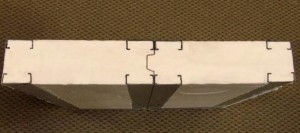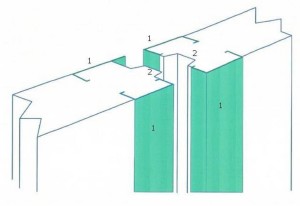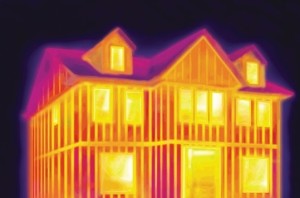ENERGY EFFICIENCY BEGINS WITH THE BUILDING ENVELOPE
According to the Department of Energy (DOE), uncontrolled air leaks can account for as much as 30 to 50% of a building’s heating and cooling costs in two primary ways:
- Typical wood-framed homes have significant air leaks wherever cracks and penetrations of wood studs, window and door frames, plumbing, electrical wiring and ductwork are located.
- Conditioned interior air seeps out through compressed and moisture laden, open air cells of conventional bat insulation.
Leaky buildings are not only uncomfortable, but very expensive. A well-sealed and insulated building envelope helps slash utility bills and reduces the amount of humidity, dust, pollen, pests and noise that can penetrate inside.
In addition to the superior insulation properties of EPS, Kwik-Build Panels are uniquely designed to stop the flow of air, moisture and wind from penetrating the exterior walls in 3 significant ways:
- There is no “thermal drift”: The reduction in R-Value of insulation over time is known as “thermal drift”. Unlike traditional bat insulation, which rapidly loses R-Value soon after installation, EPS’ insulation properties do not deteriorate over time.
- Thermal bridging eliminated: Steel studs are positioned across from each other, establishing a completeseparation between interior and exterior studs, which creates a complete thermal break. This ensures that the highly conductive steel studs exposed to outdoor temperatures are never in contact with the interior studs through which heat or cold can be transmitted. By contrast, wood or steel stud framing members in traditional construction, are highly conductive of heat or cold, wherever studs penetrate wall cavities, thereby drastically reducing the effectiveness of whatever insulation is used between studs.
- Tongue and groove (T & G) panel joints: Provide a strong, continuous, airtight, yet flexible panel interface, preventing conditioned interior air from escaping to the outside.
Kwik-Build Panels provide an effective R value of 30 as a result of:
- Zero air infiltration through exterior walls.
- A complete thermal break throughout the entire building envelope
- Uninterrupted R-value due to continuous, gap-free insulation.
- Pre-formed electrical chase ways prevent energy leaks that typically result from their inadequate sealing in traditional stick framing.
Related Articles
- Insulation Facts and Misconceptions
- How Green is Polystyrene
- Effects of Studs on Heat Loss and Insulation Value of Walls
Thermal Bridge-Free Construction
Steel studs are positioned across from each other, establishing a complete separation. This ensures that the highly conductive properties of steel studs exposed to outdoor temperatures are never in contact with the interior studs which would otherwise conduct heat or cold from outside to inside.


CROSS SECTION OF PANELS
- Steel Stud Positioning
- Tongue and Groove Panel Joint

Thermal bridging can be responsible for 30% of heat loss from a home. Wood frame studs have a lower insulating value than the batt insulation between them, and if the studs are directly in contact with the inside and outside of the wall, they can act to conduct heat out on cold days, resulting in unwanted heat loss.
“Having built our new church with these panels, we were elated that our raucous musicians and choir no longer disturbed the neighborhood, as they had in our previous wood-framed structure. And while working in the attic, wiring our sound system, I was amazed to be relatively comfortable in 90-degree temperature, while outdoor temperature was 120 degrees. Typically, attic temperatures are intolerably hotter in Arizona’s summer heat”.
Pastor, Spirit of Life Church, Bullhead City, AZ
